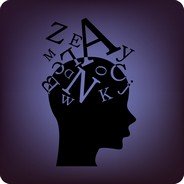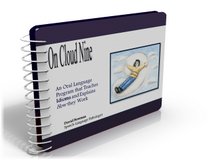What is language?
What is language?
 Language is such a big subject that it's difficult to define in a simple, uncluttered way.
Language is such a big subject that it's difficult to define in a simple, uncluttered way.
Ok, here we go. Language is a rule based set of processes.
Those processes are made up of dynamic and integrated systems.
These systems include, but are by no means limited to, morphology, semantics, syntax, narrative, phonological awareness, and pragmatics.
(We'll go into some detail about what all those systems are later.)
The bottom line is, language represents thoughts and ideas. These thoughts and ideas can be communicated in spoken, written and signed forms.
I think that that is a reasonable definition. Trying to define a BIG subject like language and language systems isn't a simple task.
It's like trying to define economic game theory or the big bang. With some subjects you can't really hope to do them justice in a few sentences.
Try this. Think of language as simply the foundation for all conscious thought and all communication.
I think we can we all agree that language pretty much underpins everything that goes on in our conscious, waking minds.
What is language development?
Language development is the expansion of intricate sounds and symbols that an individual interprets and integrates as they evolve and grow throughout their lifespan.
If we break that dry, musty sentence down into everyday language we get this: language is something we learn over the journey, starting at infancy. As babies we hear language from our parents and siblings, we mimic it, and we remember it.
At playgroup and kindergarten we continue to learn and use new forms of language, (by a miraculous process that is not yet fully understood,) at a rate that is truly mind-boggling.
Then we go to school...
Many young children arrive at school with their language learning systems brimming over. They have abundant vocabularies and intact world knowledge (for their age). Children with good language skills generally have intact oral comprehension skills as well.
Typically, children with language impairment, in contrast to peers with good language skills, begin their school lives with limited vocabularies, poor comprehension, and weak phonological awareness skills.
What is language? Bloom & Lahey's model.
Way back in 1978, Bloom & Lahey looked at defining what is language. They ultimately separated language into three major aspects: form, content, and use.
Form: includes the building blocks of language such as morphology (grammar), syntax (sentences) and phonological awareness (sound awareness).
Content: includes factors such as semantics, including word knowledge and world knowledge, and vocabulary.
Use: the area of pragmatics. That is, the understanding and use of language in a social context. This includes the ability to use appropriate language in a communicative and social milieu, and understand social rules.
What is language? Seven Categories.
To better understand what is language For convenience sake, I have separated the different language components into seven main areas: narrative/story
grammar, working memory, vocabulary, syntax, phonological awareness, grammar, and pragmatic/social skills.
Narrative/story grammar:
this relates to the structure of narratives. All stories have a framework and an underlying structure that connects events to each other. Students with language learning disabilities have poor understanding of story grammar structure. A simple story grammar structure might look like this:
Title
Characters
Setting (where, when)
Initiating Event
Problem
Plan or attempt
Consequence
Resolution
Moral
Workling Memory:
though not specifically language, working memory has a significant part to play in school-age students' capacity to learn new information, and has strong links to receptive language abilities.
Vocabulary
this relates to semantic knowledge and the learning of new words. This also includes knowing both literal and figurative meanings of certain words.
Students with poor language skills generally don’t have a rich store of words to use in spoken and written sentences.
Syntax:
relates to how words are arranged to make a sentence. Syntactic competence is an important part of the tapestry of language form, which underlies literacy. Students with poor understanding of syntax struggle to communicate their thoughts, both oral and written, in a coherent way. Their sentences come across as disjointed and tend to lack detail.
Phonological Awareness:
the leading predictor of reading and writing success or failure. Phonological awareness relates to a student’s ability to be consciously alert to the sounds in words.
This includes the ability to recognize and manipulate syllables and phonemes. Students with poor phonological awareness are at a significant disadvantage when learning to decode and spell.
Pragmatics (Social language):
Pragmatic language is mostly to do with social skills, and understanding of the rules of conversation. And yes, conversation does have certain rules we all learn to follow.
Students with pragmatic impairment often haven't learnt those rules well, or don't really care to use them.
Children with pragmatic impairment have difficulty correctly interpreting other childrens' conversations, or appear to have little to no interest in the views of others.
These students often have conversations that are perceived by others as lacking warmth, are repetitive, or fixated on an area of interest known only to the child with socail language impairment.
References
Paul R. (2001) Language Disorders from Infancy through Adolescence: Assessment and Intervention. Mosby
Wallach, G.P. (2008) Language Intervention for School-Age Students: Setting Goals for Academic Success. Mosby Elsevier
Content Updated 7/11
Also, please sign up for the Language Dispatch newsletter. The newsletter provides essential monthly language intervention tips, techniques and information.
The information provided in the monthly newsletters is ideally suited to be used by speech-language pathologists, teachers and parents of language impaired students.
Once you've signed up to the Language Dispatch you'll also receive a new free Idioms ebook, On Cloud Nine.
The On Cloud Nine Program features 100 context based scenarios, and a multiple choice format to effectively teach this difficult figurative language concept.
The program is very easy to use and is yours free, once you've signed up to the Language Dispatch. The program is available as an Adobe pdf download.

Return from what is language to speechlanguage-resources home page
Enjoy this page? Please pay it forward. Here's how...
Would you prefer to share this page with others by linking to it?
- Click on the HTML link code below.
- Copy and paste it, adding a note of your own, into your blog, a Web page, forums, a blog comment,
your Facebook account, or anywhere that someone would find this page valuable.



 Language is such a big subject that it's difficult to define in a simple, uncluttered way.
Language is such a big subject that it's difficult to define in a simple, uncluttered way. 
